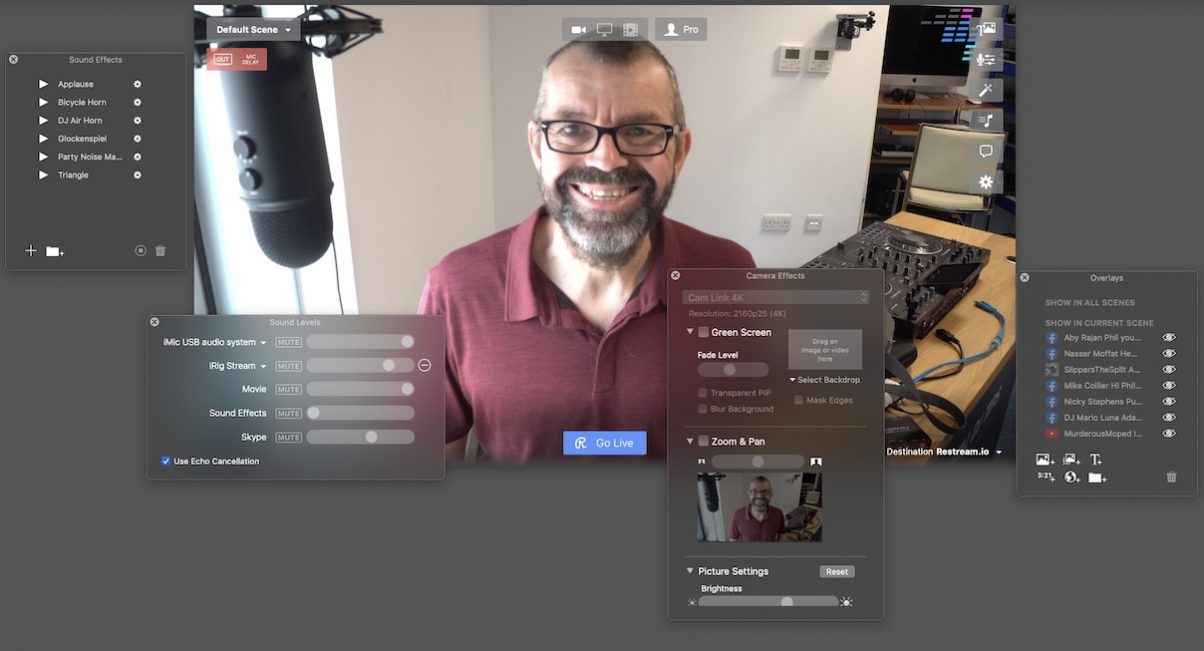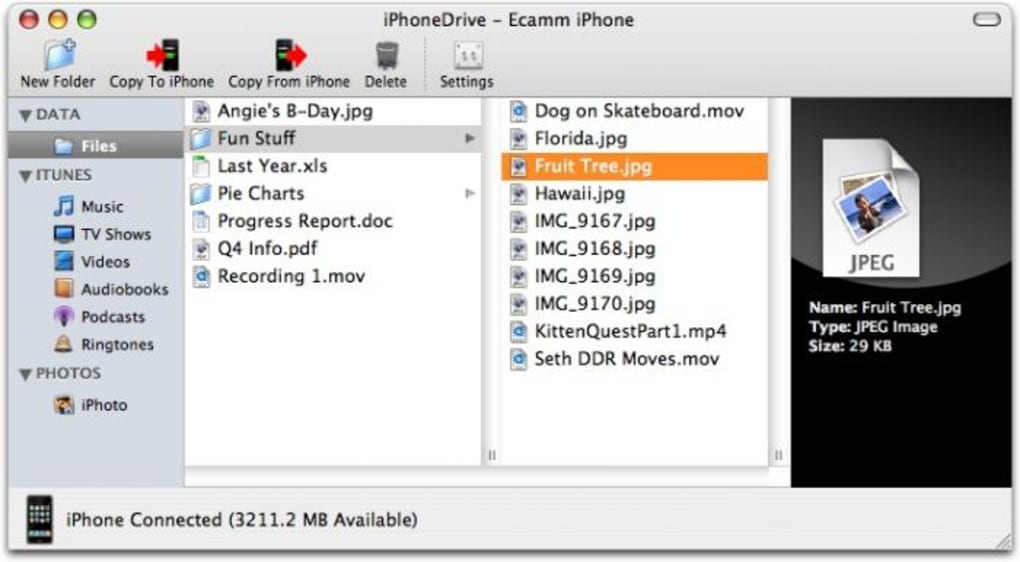

You can also export your call log for selected messages, or the contents of selected SMS messages, by dragging them to your hard drive, clicking on the Copy From iPhone button, or double-clicking on the messages themselves (which saves them to your Documents folder). (Yes, this means you can have notes that don’t use the iPhone’s dreadful default Notes font.)įor the Call Log and SMS entries, you can delete individual or multiple call records or messages. Notes you import get an approximation of the original’s formatting notes you create within PhoneView allow you to apply the usual OS X text-formatting options using the commands in the Edit: Font submenu. You can also upload plain-text, RTF, Word, PDF, or HTML documents as notes by either dragging such files into the Notes area or by clicking on the Copy To iPhone button.
Ecamm phoneview mac#
Even better, you can edit this data.Ĭlick on the Notes item and you can edit the contents of a note, delete a note, or create a new note-the only way to perform these tasks on your Mac without “jailbreaking” the iPhone. Click on one of these items in the sidebar to view all the notes, SMS messages, or call entries, respectively, on your iPhone. Although you can’t edit contacts within PhoneView, you can copy contacts to your Mac as V-Card files.īut the more-useful features, in my opinion, relate to notes, SMS messages, and your call log. If you’ve added photos to contacts in Address Book, those appear here, too. Since my original review, Ecamm has added direct access to contacts, notes, your call log, SMS messages, iTunes media, and photos-both camera images and those transferred via iTunes.įor example, if you click on the Contacts item in the sidebar, you can browse summaries (name, company, email, phone number) for each of your contacts, or search for a particular person or company. Overall, the file storage and browsing features are much-improved compared to iPhoneDrive, but they’re just a small slice of what PhoneView can now do. One other minor complaint about the Disk feature is that it doesn’t support Quick Look previews of files stored on your iPhone. PhoneView thus displays a confirmation dialog when you try to delete a file.) You can also rename items you’ve copied to your iPhone, a feature I requested in my original review. (Note that PhoneView has no Trash area once you delete a file, it’s gone from the iPhone for good. You can create new folders on the iPhone using the New Folder button in the toolbar, and you can delete a file by selecting it and clicking on the Delete button.
Ecamm phoneview download#
(You can also double-click a file in PhoneView to automatically download it to your Documents folder and then open the file I wish there was an option to choose your preferred download folder.) Unlike the original version of iPhoneDrive, PhoneView displays a progress bar so you can monitor the status of a copy. To instead copy files from your iPhone to your computer, just drag them out of the window to the Finder or select them and click on the Copy From iPhone button.

Ecamm phoneview manual#
The Disk item, selected by default, is your iPhone’s data storage folder.Įcamm automatically-and helpfully-places a copy of the PhoneView manual in this folder, but you can add any files that will fit by either dragging them from your hard drive into the window or clicking on the Copy To iPhone button (which will bring up an OS X file-navigation dialog for selecting the file to be copied).
Ecamm phoneview free#
After connecting your iPhone to your Mac and launching PhoneView, you’ll see a window similar to a Finder window, with data types on the left, file listings on the right, and the amount of free space on your iPhone displayed at the bottom. The capability to use your iPhone as a storage drive is still included in PhoneView, and it works much as it did a year ago with iPhoneDrive. (Note that for the rest of this review, when I say “iPhone,” I really mean “iPhone or iPod touch,” assuming the iPod touch provides the feature being discussed.) The current version, PhoneView 2.0.2, offers much more functionality than that original, as well as support for the iPod touch.

Since that time, iPhoneDrive has received many, many updates-as well as a couple name changes, first to MegaPhone and most recently to PhoneView. IPhoneDrive, a neat utility that let you use your iPhone’s memory as storage for files and data, much like Disk Mode on an iPod. Back in July of last year, less than a month after the iPhone debuted, I reviewed


 0 kommentar(er)
0 kommentar(er)
